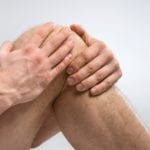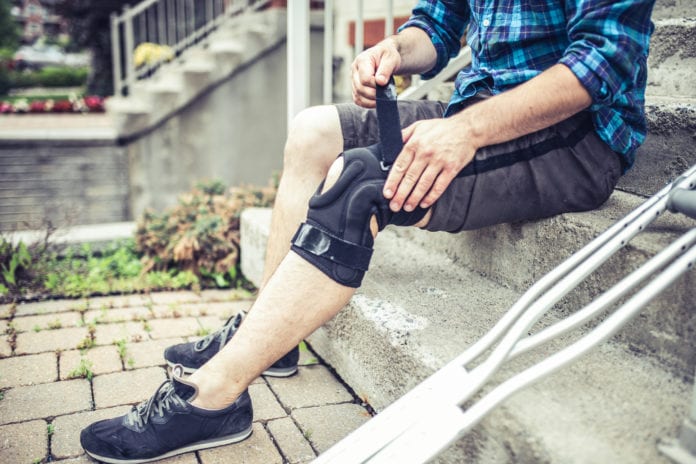 As one of the largest joints in the body, the knee is highly susceptible to injury. One of the most common knee injuries is a torn meniscus. The meniscus is a rubbery, C-shaped disk that cushions the knee joint and absorbs shock between the shinbone and thighbone. Each knee has two menisci to keep the weight balanced across the joint.
As one of the largest joints in the body, the knee is highly susceptible to injury. One of the most common knee injuries is a torn meniscus. The meniscus is a rubbery, C-shaped disk that cushions the knee joint and absorbs shock between the shinbone and thighbone. Each knee has two menisci to keep the weight balanced across the joint.
Athletes, particularly those who play contact sports, are most prone to meniscal tears, but the injury can happen to anyone at any age.
A meniscal tear is most often caused when a person twists or turns quickly with one foot planted on the ground and the knee bent. For example, if a tennis player squats and twists his or her knee at the same time, a tear can happen. A torn meniscus is more likely to occur with age, as the meniscus and cartilage in the knee wear thin over time. Just twisting awkwardly while standing up from a chair could be enough to cause a tear in someone whose meniscus has age-related wear and tear.
Torn Meniscus Symptoms
Symptoms vary depending on the severity of the injury. Meniscal tears are categorized into three groups: minor, moderate and major tears. Most people find they can walk on the injured leg after the tear but may feel a “popping” sensation. Athletes often continue playing with a torn meniscus, but the affected joint will likely become swollen and stiff within two to three days.
The most common symptoms are:
- Catching or locking of the knee
- Feeling a “pop” in the knee
- Inability to move the knee through a full range of motion (such as not being able to straighten the knee)
- Pain
- Stiffness and swelling
- The sensation of the knee feeling “wobbly” or unstable, giving way without warning
If a torn meniscus is severe enough or you do not seek treatment, it’s possible for a piece of the meniscus to come loose and drift into the knee joint. This can cause your knee to catch, pop or slip.
Torn Meniscus Diagnosis
To diagnose a torn meniscus, your doctor may perform a McMurray test. During this exam, your doctor will bend your knee, then straighten it while rotating it. This move puts tension on a torn meniscus and if your meniscus is indeed torn, you will hear a clicking sound.
Your doctor may also order an imaging test, such as an X-ray or MRI to confirm a tear.
Torn Meniscus Treatment
Your doctor will determine your best treatment options based on the type, location, and severity of the tear. He or she will also consider your age and activity level.
Common treatments include:
- Ice
- Non-steroidal anti-inflammatory medicines (such as aspirin or ibuprofen)
- Physical therapy
- Rest
- Surgery
Surgical Treatment for a Meniscal Tear
If your doctor determines you need surgery to repair a torn meniscus, you will likely have a minimally invasive form of surgery using arthroscopy as opposed to having a large incision in the knee.
Knee arthroscopy is a surgical procedure in which a miniature camera is inserted into your knee through a small incision. This allows your surgeon to better view your knee joint. Miniature surgical instruments will then be inserted into your knee to trim or repair the tear.
Depending on the tear, one of the following procedures can be done:
- Meniscectomy – In this procedure, the damaged meniscal tissue is trimmed away (partial meniscectomy) or, in serious cases, the entire meniscus is removed (total meniscectomy). Total meniscectomy procedures are rare because of the likelihood of causing osteoarthritis in the knee.
- Meniscus repair – Some meniscal tears can be repaired by stitching the torn pieces together.
Ideally, much of the meniscus can be preserved. This reduces your future risk of knee joint degeneration.
Torn Meniscus Rehabilitation
Your healing and recovery time depends on the severity of your meniscal tear. You may need a cast or brace around your knee after surgery to keep the joint from moving. You may also need crutches to walk for a period of time to keep weight off your knee.
Your doctor will help you develop a rehabilitation program that allows you to regain as much flexibility and strength as possible.



